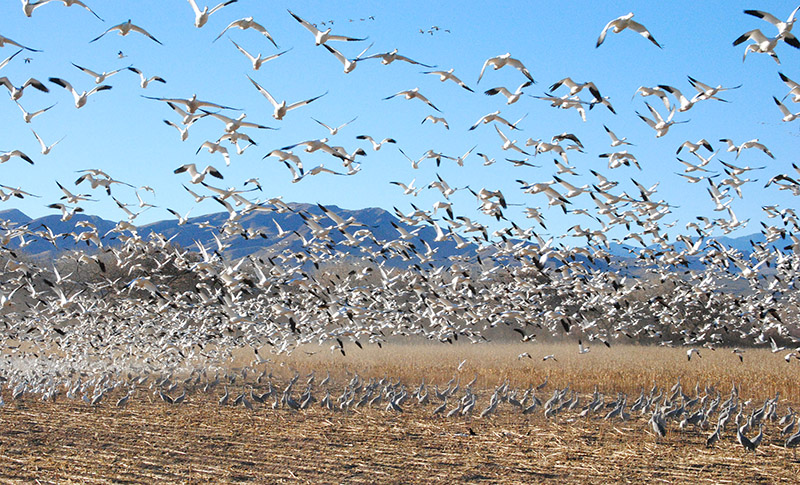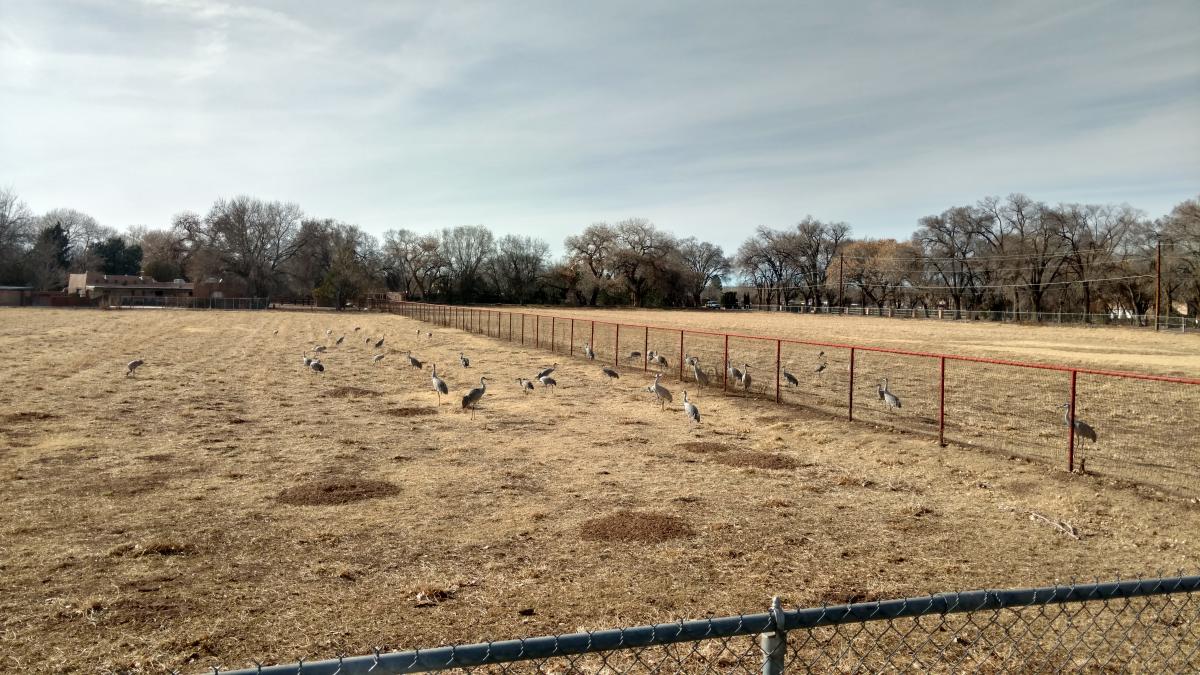Maxwell Museum Blog

Puebloan Agriculture and the Migratory Behavior of Birds
Robin Cordero, Project Administrator/Co-Principal Investigator, Office of Contract Archeology
Each winter, the Albuquerque Basin is visited by thousands of migratory birds—cranes, geese, and ducks—who winter in New Mexico, dining on wetland resources and seeds left behind in harvested fields as well as small animals that are attracted to the fields. This was not always the case. Recent research on bird bones (avifauna) by Office of Contract Archeology Principal Investigator Robin Cordero reveals that Puebloan communities of the Classic Period (AD 1300/25-1600) transformed the Central Rio Grande landscape in ways that made it a desirable place for migratory birds to halt their southward travels.
Cordero’s rigorous analysis compares the nature and frequency of avifaunal remains from 20 sites of the Developmental Period (AD 600-1200/1225) to remains from nine sites of the subsequent Classic Period. During the Developmental Period, Puebloans lived in small dispersed hamlets of one to three houses distributed along the Rio Grande and its tributaries. Bird remains are rare in faunal assemblages of this period and winter migrants comprise less than 1% of all non-domesticated bird remains.
For the full research paper:




